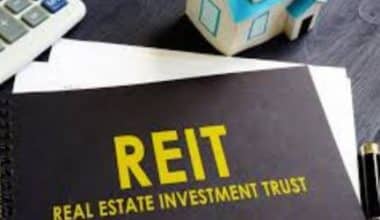Investing in real estate is usually challenging when picking out property to invest in out of the available options. The 1% rule is a shortcut that investors use to swiftly filter down investment alternatives in order to discover the ideal property before another buyer grabs the deal. This article will guide you on how to use the 1% rule in real estate investing, and how the bigger pockets 1 percent rule works in real estate. Also, you will get to know how to calculate the 1% rule using the 1 percent rule real estate calculator.
Overview
The 1 percent rule of real estate investing compares the purchase price of an investment property to the gross income it will generate. To achieve the 1 rule in real estate investing. A prospective investment’s monthly rent must be equal to or greater than 1% of the purchase price. The rule’s purpose is to ensure that the rent is larger than or, at the very least, equal to the mortgage payment so that the investor at least breaks even on the property.
1% Rule Real Estate Investing
If you wish to purchase an investment property, the 1% rule can be a useful tool in determining and locating the correct property to meet your targets. You can use it to rapidly evaluate how the property will cash flow or, if the property is now unoccupied, to help set monthly rent to charge while investing in real estate. However, it is important to remember that this is only a guideline. It’s a fine place to start, but you must take additional aspects into account when deciding how much rent to charge your clients.
Is the 1% Rule Realistic in Real Estate?
Real estate investors utilize the 1% rule as a guideline for selecting feasible investment opportunities for their portfolios. Although the guideline has assisted many investors in making prudent selections regarding investment properties, the current state of the real estate market may render its application impossible.
What Is the 2% Rule Real Estate?
The two percent rule in real estate refers to the proportion of your home’s total value that you should charge in rent. In other words, you should request at least $6,000 per month for a $300,000 house in order to make it worthwhile.
1% Rule Real Estate Bigger Pockets
1 rule real estate investing is a hazardous business anyone can venture into. But if you know how to run the market and some critical tactics of the trade, the prize can be your own financial freedom. Bigger pockets is a comprehensive resource for anyone wishing to thrive in real estate investing. The online network was founded by investors to aid in the growth and education of other investors. This real estate community can help you find your first investment property, develop your current portfolio, network with fellow investors and sellers, or just improve your financial status. Bigger pockets also offer deal-evaluation calculators like the 1 percent rule estate calculator. Read on to know how it works.
Bigger Pockets 1 Percent Rule Real Estate Calculator
Here’s the quick and easy 1 rule real estate bigger pockets arithmetic. This includes the 1%, 2%, or 3% rule for analyzing possible investment properties.
Example 1: Bob purchases a house for $100,000 and feels he can rent it out for $1,000 per month. Bob is able to meet the 1% criteria with this purchase because $1,000 in rent equals 1% of the $100,000 buying price.
Example 2: Betty purchases a triplex for $225,000 and leases out each apartment for $1,500. Her total monthly gross income is $4,500. Suzy has met the 2% rule. $225,000 divided by 2% equals $4,500.
Example 3: Perry buys and renovates a triplex. He purchased the triplex for $160,000 with a hard money loan. Each bedroom costs about $525 per month on average. There are three bedrooms in each of the three units. As a result, each unit makes approximately $1,575 ($525 multiplied by 3 bedrooms). Each month, the complete triplex generates $4,800 ($1,575 times 3 units, plus $75 per month for the on-site garage leasing). Perry meets the 3% requirement with this property since $4,800 is 3% of $160,000. Having said that, I feel it is still extremely possible to meet these criteria. Here are a few ideas to get you there.
How to Meet the Bigger Pockets Real Estate 1 Percent Rule Criteria
- Make an investment in a low-cost market: You can invest a 1 rule distance of 1,500 miles by investing in real estate and self-manage as well. It is conceivable.
- Use a one-of-a-kind method to increase rental income: You can do this by renting out the room. You may even rent out other areas, such as a garage, or purchase coin-operated washers and dryers.
- Purchase in a location with high rental demand: This potentially allows for annual rises in rental fees.
- Buy off-market: Most houses on the MLS are usually expensive. To obtain a better rate, try working with wholesalers. Alternatively, launch a marketing campaign aimed at property owners in the location you choose
- For a lesser price, purchase a home with under-market rent and neglected upkeep. Make the required repairs and boost the rent accordingly.
1 Percent Rule Real Estate Calculator
It is easy to use the real estate 1% rule, calculator. Simply multiply the property’s purchase price by 1% or rather, shift the comma to the left two spaces. The end result should be the lowest amount you charge in monthly rent. If the property requires any repairs, you should enter these into the equation by adding them to the purchase price and then increasing the total by 1%.
Examples: Using the 1 rule real estate calculator, you can calculate the 1% rule with these examples. Here’s an example of a home with a $150,000 buying price: $1,500 = $150,000 x 0.01
Using the1 rule real estate calculator you should look for a mortgage with a monthly payment of $1,500 or less, and charge your tenants a minimum monthly rent of $1,500.
Assume the home needs roughly $10,000 in repairs. In this case, you would add the cost of repairs to the home’s purchase price, for a total of $160,000. The total would then be multiplied by 1% to yield a minimum monthly payment of $1,600.
When to Use the 1 Percent Rule Real Estate Calculator
The 1% rule is best using a pre-screening method. It is a method of saving time while being disciplined as an investor. This implies you’ll be using it early on in the process to find smart investment selections.
For example, you may use it to swiftly sift 20 listed homes you receive from your real estate agent. To begin, you would go down the list of asking prices and estimate 1% of each list price. To do this in your thoughts, simply move the decimal place over two times to the left. $100,000, for example, equals $1,000.00.
Then, after you get the 1% figure, you would compare it to the property’s market rent. If the rent is close to 1% of the asking price, it’s probably worth looking into further. However, if the true rent is significantly below 1%, you can simply disregard that choice. However, as you study and become an expert in your field, rent pricing should become more obvious without the need for a calculator. That is the best setting in which to use the one percent rule. But first, let’s look at when you shouldn’t use it.
When Not to Use the 1 Percent Rule Real Estate Calculator
After narrowing down your selection of homes, I believe that going beyond the 1% rule and employing more in-depth analysis techniques. For instance, if you intend to make an offer and subsequently close on a purchase, you will require far more information than the one percent rule gives.
The one percent criterion only considers a property’s gross income. That should be what you collect from a tenant. However, the bottom line of rental investing is net income, or what is left over after all expenses are deducted. To truly comprehend a property’s cash flow, expenses such as management, vacancies, taxes, insurance, maintenance, capital expenses, and mortgage payments must be deducted.
You can assess and set targets for a property’s cap rate and net income after financing. A property that meets the one percent requirement may also meet these criteria. Sometimes it works, sometimes it doesn’t. Much relies on the specifics of the property’s expenses or the mortgage finance I may obtain.
In addition, you may apply the 1 rule to particular categories of properties while investing. It is most appropriate for small residential rentals (houses, duplexes, triplexes, and quadplexes) in A or B areas. If you’re purchasing in a lower-priced C neighborhood, or mobile home parks, large multi-unit buildings, or commercial property, your income must be higher than the one percent guideline allows. Another challenge to the one percent rule is that you cannot use it in high-priced marketplaces.
Advantages of the 1% Rule
- Real estate investing demands extensive study, but employing a basic equation to quickly make judgments might save time in the long run. Using this rule can assist you:
- Determine the total cash on cash return. For some real estate investors, this is enough to decide if they will proceed with a purchase or look into the details further.
- Negotiate the 1% rule that real estate investors use. As a result, you may always use this rule to gain a rough feel of how other individuals, such as competitive purchasers, real estate brokers, and lenders, are viewing the same investment you are. Knowing how other stakeholders perceive a property will provide you with the information you need to ensure you’re getting a fair bargain and to negotiate accordingly.
- Quickly verify multiple properties. Using the 1% rule is a simple technique to quickly sort through various properties you’re interested in. If you’re analyzing multiple potential purchases and one of them provides an evident risk to positive cash flow, you can certainly check that one off the list and examine the other properties.
- If a property does not match the 1% criterion, it doesn’t always imply it’s a flop; there could be other characteristics that make it a good investment. If it doesn’t even come close, it’s a solid indication that you should keep looking for one.
Disadvantages of the 1% rule
Because of the simplicity of the 1 percent rule, it does not provide a full look at all of the elements that influence rental rates. You should also check for
- Location: Examine the average rents in the region, as well as the tenant turnover rate. If a property’s area does not initially support the 1% rule but it may grow in popularity, it may still be a wise investment.
- Costs of upkeep and repair: Would you be spending a lot of money on landscaping, or are you purchasing a historic home that will have special or extensive maintenance? All of these factors have an impact on your investment
1 Percent Rule Real Estate FAQs
Is the 1% rule outdated?
The 1% rule is simply a rule of thumb and an outdated one at that. It was created during a different time and overvalues the role of cash flow in today’s real estate investing climate.
Is the 2% rule realistic?
The 2% rule in real estate is a rule of thumb that suggests that a rental property is a good investment if the monthly rental income is equal to or higher than 2% of the investment property price.
What is the 70 percent rule in real estate?
The 70% rule helps home flippers determine the maximum price they should pay for an investment property. Basically, they should spend no more than 70% of the home’s after-repair value minus the costs of renovating the property.
What is Brrrr method?
The BRRRR (Buy, Rehab, Rent, Refinance, Repeat) Method is a real estate investment strategy that involves flipping distressed property, renting it out, and then cash-out refinancing it in order to fund further rental property investment






